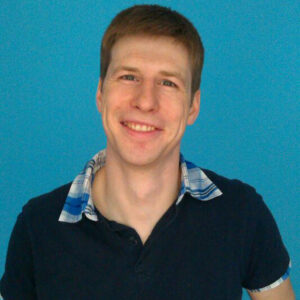Biography
Grown up in the picturesque part of Germany called Thüringen, I studied Physics at the Friedrich Schiller University Jena and was one of the last students to receive a German diploma in 2008. (Now they all become Bachelors and Masters.)
Having enjoyed my first experiences in gravitational-wave data analysis with Prof. Schmeißer, and a one-year diploma project in the Numerical Relativity group of Prof. Brügmann, I moved on to the MPI for Gravitational Physics in Potsdam, also known as the Albert Einstein Institute, where I spent three and a half wonderful years (2009 – 2012) working on the interface of numerical relativity and gravitational-wave data analysis under the supervision of Bernard Schutz and Badri Krishnan.
After a few months as a post doc at the other Albert Einstein Institute in Hannover, I moved to Cardiff in September 2012, where I was a post-doctoral researcher under Stephen Fairhurst and later an ERC-funded Research Fellow under Mark Hannam.
My time in Cardiff had a great influence on me, and it also saw the (gravitational-wave) world changing on September 14, 2015. I was part of the international team of scientists that discovered and interpreted the first direct gravitational-wave observation of a black-hole binary. My small role in this gigantic endeavour was to help understanding what the signal we observed told us about the black holes it originated from. And it told us a lot!
Since November 2016 I have the honour to lead my own research group.
Education and positions held
- 2012 – 2016
- Research Fellow at Cardiff University
- 2009 – 2012
- PhD at MPI for Gravitational Physics (Postdam)
- 2003 – 2008
- Physics Diploma at University of Jena
Research Summary
Black holes are hard to find in the Universe. After all, nothing escapes them. However, when two of those mysterious object trap each other through their gravitational attraction, they typically perform a long-lasting dance around each other that warps space and time so much that they emit spacetime oscillations called gravitational waves. In my research group, we analyze data from kilometer-scale laser interferometers (called LIGO and Virgo) that can pick up those tiny spacetime distortions. The best chance we have to understand what we see (or rather, ‘hear’), is to model the gravitational-wave signal emitted by those coalescing black holes. We combine super computer simulations, pen-and-paper calculations and a fair amount of fancy statistics to extract more and more invisible secrets the Universe is holding.
Key publications
- LIGO Scientific and Virgo Collaborations (B. P. Abbott et al.), GW190412: Observation of a Binary-Black-Hole Coalescence with Asymmetric Masses, accepted by Phys. Rev. D., arXiv:2004.08342 (2020)
- Sebastian Khan, Frank Ohme, Katerina Chatziioannou, and Mark Hannam, Including higher order multipoles in gravitational-wave models for precessing binary black holes, Phys. Rev. D 101, 024056 (2020), arXiv: 1911.06050
- LIGO Scientific and Virgo Collaborations (B. P. Abbott et al.), Properties of the Binary Black Hole Merger GW150914. Phys. Rev. Lett. 116, no. 24, 241102 (2016), arXiv:1602.03840
- F. Pannarale and F. Ohme, Prospects for joint gravitational-wave and electromagnetic observations of neutron-star–black-hole coalescing binaries. Astrophys. J. 791 L7 (2014), arXiv:1406.6057
- F. Ohme, A. B. Nielsen, D. Keppel and A. Lundgren, Statistical and systematic errors for gravitational-wave inspiral signals: A principal component analysis. Phys. Rev. D88 4 042002 (2013), arXiv:1304.7017

